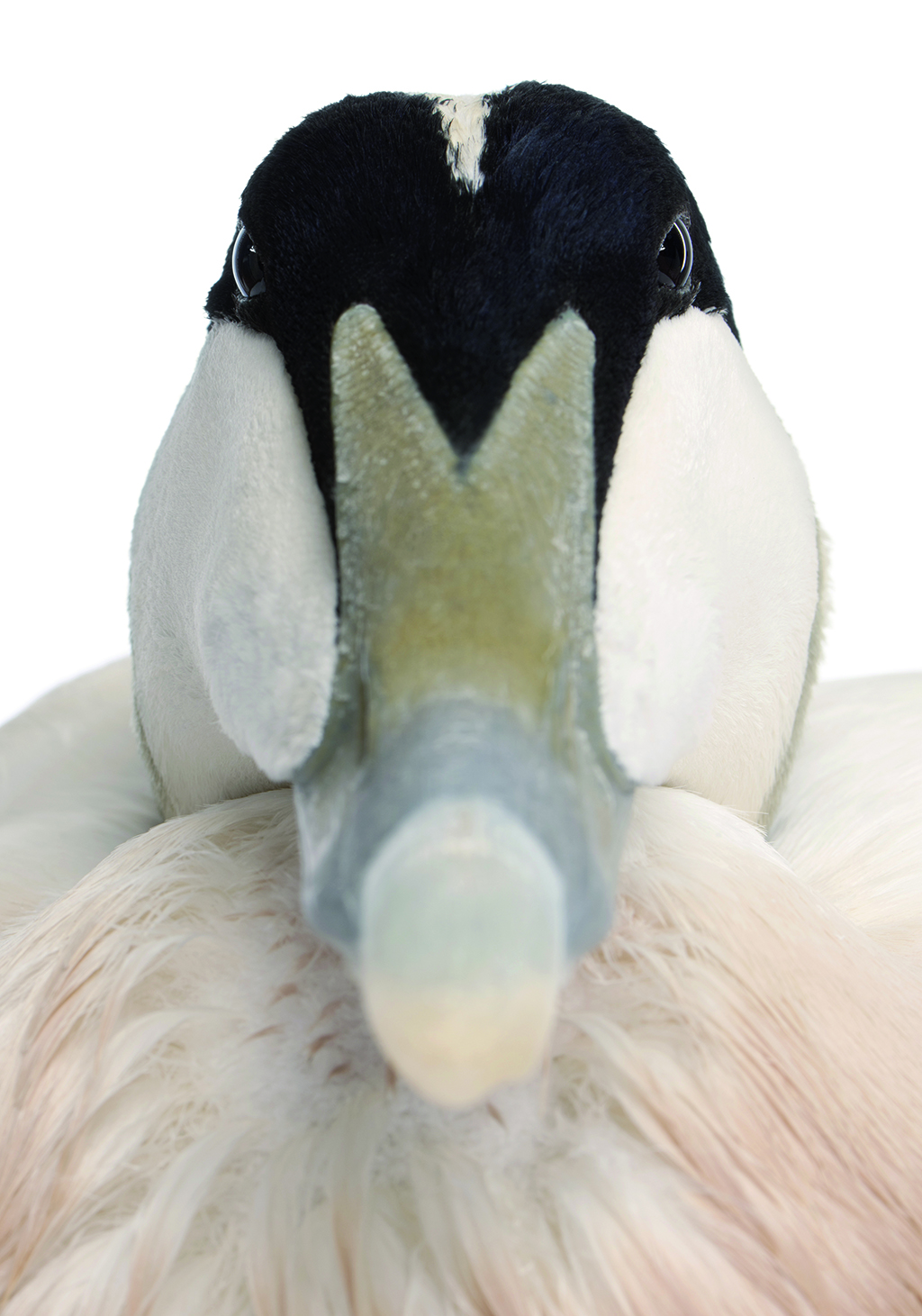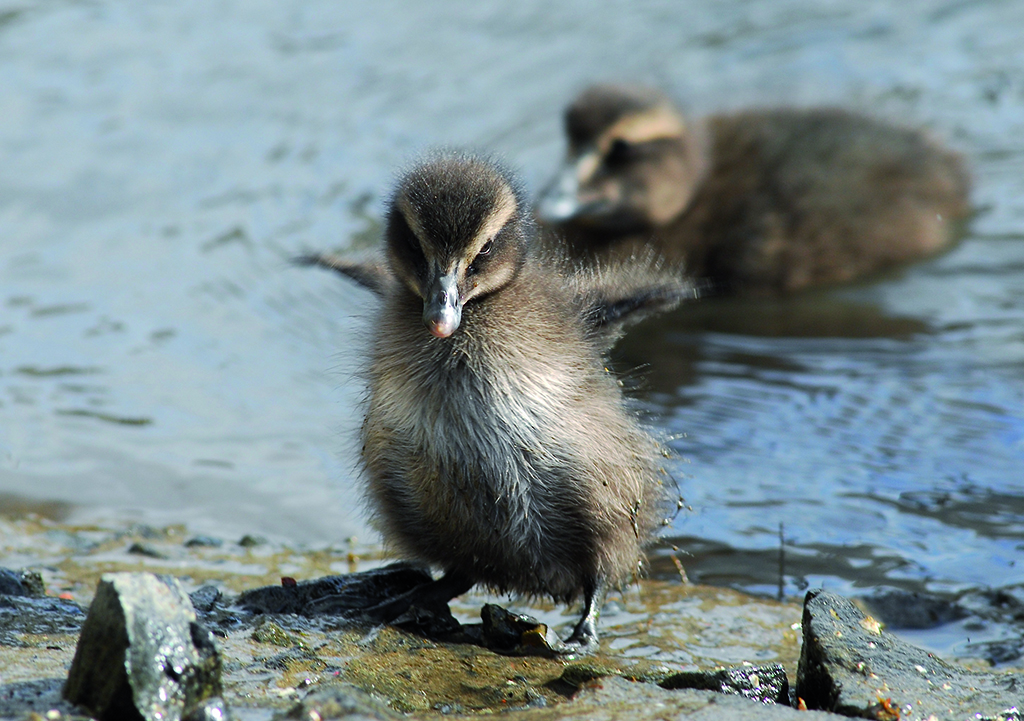The much-loved eider duck is a conservation success story, but its insatiable appetite for Scotland’s finest shellfish has made it a raft of new enemies.
Scouring the beach at Tentsmuir in Fife, as I walk, I’m constantly scanning the horizon with my binoculars, searching for waders and watching large seals haul themselves out of the water and on to the sand bars.
Then, as I round the point, Dundee shimmering across the Tay estuary, a vast flock of birds can be seen drifting on the current.
As the flock is washed closer to shore, I can see that it is made up of thousands of eider ducks. They rise up and down on the gentle swell, an action that has given this sea-duck its nickname of ‘dunter’ – a Shetland word meaning ‘to bob’. More and more birds sail past, countless numbers of them, and I am transfixed by the distinctive piebald splendour of the drakes highlighted by the low winter sun.
Some 15,000 eider ducks winter on the Tay estuary each year and it has been said that the nutrients created by their droppings maintain rich mussel beds, which in turn provide perfect feeding grounds for this impressive gathering.
The eider is the largest duck in Britain, and can weigh up to 3kg (nearly 7lbs). It is also one of the easiest to identify, thanks to its rotund, bulky shape and dumpy neck. Gregarious compared to some breeds of duck, they gather in huge flocks in sheltered bays towards the end of the summer; like all ducks they are rendered flightless for a short time.
Eiders tend to be sedentary and do not migrate long distances, although they are notable for the speed they can reach – up to 70mph during level flight, for example.
If you walk around rocky coastal headlands in May and June, you’ll often hear ‘ooh’ and ‘aah’ sounds drifting on the breeze – a bit like the noise made by gossips when they hear a particularly choice titbit of news. It’s one of the eider’s most distinctive and endearing characteristics.

One elderly fisherman with a passion for the duck told me that it made him think of Frankie Howerd in the Carry On films. Now, whenever I hear it, that’s what I think of too, and I find myself seeking out the drakes as they rise up a little out of the water, revealing that peachy tint on their breasts, then tipping back their heads and exclaiming, ‘Oooh!’
The eider duck tends to be either revered or hated. Two of its nicknames, ‘St Cuthbert’s duck’ and ‘Cuddy duck’, refer to the great esteem the birds were held in by the seventh century naturalist St Cuthbert. He loved the birds so much that he secured their protection on the Farne Islands and elsewhere in the north of England, and the area still remains a stronghold for them.
Like St Cuthbert, the naturalist Gavin Maxwell was an admirer of the duck and, before his life was tragically cut short in 1969, he was preparing to turn his small sanctuary island of Eilean Bàn, near Skye, into an eider colony.
The eider drake, he noted, wore ‘the full dress uniform of some unknown navy’s admiral’. This plumage, magnificent during the breeding season, comes to full fruition at the age of three and a half. A stunning apricot blush tinges the breast and a soft mossy green hue is added to the back of the head. Before they are mature, the drakes’ dapper black and white livery is less defined, and the young males may be dressed almost scruffily in a wide variation of dapples and patterns.
While the female looks a little drab in comparison to her smart partner, when viewed up close her plumage is no less impressive. As she sits on her nest, she resembles a succulent Christmas pudding in glorious shades of brown.
And it is the female who can claim to produce the world’s finest insulating material – still used for filling the most desirable duvets, eiderdowns (hence the name), pillows, sleeping bags, and jackets worn by intrepid Arctic explorers.
The ducks favour small islands and grassy skerries and come ashore with their mates in spring, often forming a loose colony in which they nest close to one another. The nest is hardly hidden but the duck’s mottled brown feathers offer superb camouflage. The duck plucks feathers from her own breast and thickly lines the nest before laying between four and six olive-coloured eggs. This luxuriant material is easy to gather, and eider farmers are able to collect the down several times in a season without damaging or threatening the nesting ducks.

Goose down is also much sought after, but it is eider down that is most valuable. Synthetic alternatives are cheaper but no match for the real thing. While eider insulates perfectly down to an impressive -35°C, synthetic material is only efficient to -7°C – yet ironically often causes perspiration.
Eiders, which are found all over the northern coasts of Europe, North America and eastern Siberia, have long been farmed in various parts of the north, although today the main core of this business is centred on Iceland and Norway. There are no eider farms in Scotland today; a missed opportunity, perhaps, as demand grows for natural, organic materials.
Not everyone welcomes the eiders’ presence, though. The ducks have made themselves many enemies among mussel farmers – it’s not just human gourmets who enjoy succulent rope-grown mussels. The mussel ‘spats’ that are attached to these large ropes and farmed all over the west coast have softer shells than wild mussels and are not encrusted with barnacles. This makes it far easier for the ducks to swallow them whole; the shells are then crushed in their stomachs and excreted. Scare tactics such as loud frightening noises have only limited success and, as with scarecrows, the birds soon lose their fear.
Some mussel farmers have seen so much of their crop stolen that they have applied for a licence to control the ducks.
This, happily, is still a rare occurrence; while there are those who find the eiders destructive, many others accept that the ducks’ fondness for shellfish is just one of the hazards of farming mussels.

The wrath of the shellfish farmers is not the only hazard the eider has to contend with, however. Oil spills and pollution are an ever-present threat, while anti-predator nets at fish farms are a death trap. A diving eider can reach a depth of 20 metres and remain submerged for over a minute. Birds that get trapped in these nets do not re-emerge.
Eiders were once heavily persecuted and large numbers of their eggs were stolen for the table. Even today, while the eiders of the Tay estuary are thriving, flocks in other parts of Scotland are not faring as well. In Shetland, for example, numbers have fallen drastically in the past decade, though it is not entirely clear why. Several severe oil spills, combined with an increase in the population of the great skua, or bonxie, are thought to have contributed to the situation.
Eiders are also extremely vulnerable to predation. Because the females sit so tightly on their eggs they can easily be approached and often will not move even when touched.
It makes them easy prey for foxes, minks and otters, while gulls, crows, rats and great skuas frequently take eggs and ducklings. The ducklings hatch after approximately 28 days of incubation and are soon led out to sea by their mothers. Large crèches may be made up when non-breeding females, known as ‘aunties’, join forces and help to take care of the young. These crèches also offer the birds safety in numbers.
All in all, though, eiders are generally doing well in most parts of Scotland and are a welcome sight for most people.
TAGS

